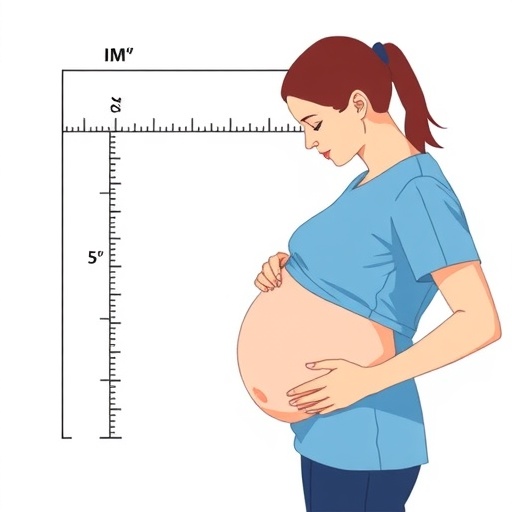
In recent years, the intricate challenges of managing neonates affected by in-utero growth restriction (IUGR) have garnered significant attention in neonatal medicine. A groundbreaking prospective cohort study, recently published in the Journal of Perinatology, offers compelling insights into the complexities of neonatal morbidity associated with IUGR. The study, led by Alda, Wood, MacDonald, and colleagues, meticulously dissects the postnatal trajectory of infants born with growth impairments, fundamentally reshaping our understanding of their immediate care needs and long-term health outcomes.
IUGR is a condition where a fetus does not achieve its genetically predetermined growth potential during pregnancy, often due to placental insufficiency, maternal health issues, or environmental factors. Although extensively studied antenatally, the postnatal ramifications and management strategies for these vulnerable neonates have remained inadequately characterized until now. This investigation embarks on bridging this knowledge gap by enrolling a prospective cohort of neonates diagnosed with IUGR, tracking a spectrum of morbidity indicators through the neonatal period.
The study’s design demonstrates a rigorous methodological framework, integrating detailed clinical assessments with advanced biometric analyses. These include serial anthropometric measurements, feeding protocols, and the evaluation of respiratory, cardiovascular, and neurological function. By correlating these data points, the researchers illuminate distinct vulnerability profiles among IUGR neonates, highlighting the heterogeneity in their clinical presentations and responses to standard neonatal care.
Significantly, the findings underscore that infants affected by IUGR exhibit heightened susceptibility to respiratory distress syndrome, even in the absence of prematurity. This observation challenges the conventional paradigm that primarily associates respiratory morbidity with premature lung development. Instead, the data suggest that chronic intrauterine compromise alters pulmonary maturation pathways, necessitating tailored respiratory support strategies to mitigate postnatal complications.
Neurological outcomes also form a pivotal focus of the study. The authors report a striking prevalence of subtle neurodevelopmental abnormalities in the early neonatal period, such as altered reflexes and delayed sensorimotor responses. These early markers may presage long-term neurocognitive impairments, emphasizing the critical need for early intervention programs and vigilant neurodevelopmental follow-up protocols to optimize developmental trajectories.
Cardiovascular implications emerge as another critical dimension in the postnatal care of IUGR infants. The cohort exhibited increased rates of systemic hypotension and impaired cardiac output, findings that may reflect in utero hemodynamic adaptations to placental insufficiency. This necessitates a recalibration of neonatal cardiovascular monitoring and the implementation of individualized therapeutic interventions to ensure hemodynamic stability in this high-risk population.
Nutritional management strategies are also poignantly addressed in this study. Given the compromised intrauterine environment, IUGR neonates confront unique metabolic demands and feeding challenges. The research highlights that early and carefully calibrated parenteral and enteral nutrition regimens significantly influence growth velocity and overall morbidity. Moreover, attention is drawn to the timing and composition of feeding, reinforcing the principle that nutrition is a cornerstone in the postnatal rehabilitation of growth-restricted infants.
An innovative aspect of the research lies in its exploration of the interaction between IUGR and immunological development. While not traditionally the central focus in neonatal IUGR management, the study reveals altered immune profiles—manifested by fluctuating cytokine levels and leukocyte patterns—potentially increasing vulnerability to infections. This novel insight opens avenues for prophylactic strategies and personalized immunological support for these newborns.
Furthermore, the study offers vital insights into parental and familial dimensions of neonatal care. Recognizing that parents of IUGR infants often face heightened anxiety and uncertainty, the authors advocate for integrated family-centered care frameworks that provide comprehensive education, psychological support, and active involvement in clinical decision-making. Such holistic approaches are posited to improve not only neonatal outcomes but also familial wellbeing and long-term care engagement.
Technologically, the study leverages cutting-edge monitoring tools, including non-invasive hemodynamic assessments and advanced imaging modalities. These innovations enable real-time evaluation of organ function and perfusion in IUGR neonates, facilitating prompt and precise interventions. The integration of technology represents a transformative leap in neonatal care practices that may be adopted broadly in neonatal intensive care units worldwide.
From a public health perspective, the implications of this research extend far beyond the neonatal intensive care environment. By elucidating the intricate pathophysiological sequelae associated with IUGR, the study flags the urgency of enhanced prenatal surveillance and early obstetrical interventions. It advocates for multidisciplinary collaborations to mitigate the prevalence of IUGR and improve outcomes from the earliest stages of fetal development.
This comprehensive investigation also raises important ethical considerations related to the management of compromised neonates. It highlights the delicate balance clinicians must negotiate between aggressive intervention and the respect for the infant’s physiological limits. The study calls for ongoing discourse around decision-making frameworks that are both evidence-based and sensitive to familial values.
Moreover, the authors project that their findings will catalyze future research exploring the genetic and epigenetic underpinnings of IUGR-associated morbidity. Decoding these molecular mechanisms could unveil novel therapeutic targets and foster the development of precision medicine approaches tailored to the unique profiles of growth-restricted infants.
In summary, the prospective cohort study by Alda and colleagues constitutes a seminal contribution to neonatology by systematically mapping the multifaceted morbidity landscape encountered by infants born after in-utero growth restriction. Through its comprehensive and methodologically robust approach, the research delineates critical clinical insights and catalyzes a paradigm shift in the nuanced care required for this fragile population. The implications for neonatal practice, family support, and long-term health trajectories underscore the profound significance of this work in advancing both clinical and scientific frontiers.
As the neonatal care community assimilates these findings, there emerges a renewed imperative to refine guidelines, optimize resource allocation, and foster interdisciplinary approaches that address the complex needs of IUGR infants. This evolving narrative, illuminated by meticulous research, ultimately aspires to enhance survival, reduce morbidity, and support the flourishing of infants who begin life constrained by growth challenges within the womb.
Subject of Research: Care and morbidity outcomes of neonates following in-utero growth restriction.
Article Title: Care of neonates following in-utero growth restriction: A prospective cohort study exploring neonatal morbidity.
Article References:
Alda, M.G., Wood, A.G., MacDonald, T. et al. Care of neonates following in-utero growth restriction: A prospective cohort study exploring neonatal morbidity. J Perinatol (2025). https://doi.org/10.1038/s41372-025-02397-9
Image Credits: AI Generated
DOI: https://doi.org/10.1038/s41372-025-02397-9
Tags: biometric analyses in pediatricsclinical assessments in neonatal carein-utero growth restrictionlong-term health outcomes for neonatesmaternal health and fetal growthneonatal growth restrictionneonatal health research advancementsneonatal morbidity studiesplacental insufficiency effectspostnatal care for IUGRprospective cohort studies in neonatologyvulnerability profiles in IUGR infants





